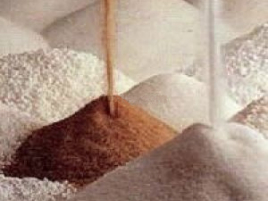Simple Strategies Buffer Blood Sugar
By Dr. David Jockers | Dec 23, 2011

Sweet foods and starches are not genetically congruent to eat on a regular basis. Our ancestors looked at these as rare delicacies. Most people in our society today are raised on a steady diet of sugars, grains and other starches. Here are the best strategies to lower the blood sugar/insulin response when consuming carbohydrate rich foods.
Foods are measured for their effect on blood sugar through the Glycemic Index (GI). The GI ranges from 0-100. Foods that have a GI index under 55 are considered low GI. A range of 56-69 is considered medium GI while 70+ is considered high. It is recommended to eat foods that are low GI and to utilize different strategies to lower and/or buffer these GI responses in your body.
Another way of ranking the blood sugar response of different foods is through the Glycemic Load (GL). The GL measures how long the food will release sugar into the system. Many foods may be high GI but low GL. An example of this would be fruit such as watermelon. Other foods are low GI but high GL such as oatmeal, which releases sugar into the system for an extended period of time.
A GL of 20 or more is high; a GL of 11-19 is medium; and a GL of 10 or less is low. High GL foods are inflammatory in nature, so it is advisable to stick with foods that are low GI and GL as much as possible or to use advanced strategies to buffer the glycemic response in the body.
Simple Strategies to Improve Blood Sugar Signaling
1. Use Lemon: The citric acid in lemon helps to buffer the release of blood sugar. Additionally, the anti-oxidants and trace minerals within lemon help to improve insulin signaling, boost liver function and stabilize blood sugar. Squeeze a lemon on as many foods as possible and drink it freshly squeezed in purified water.
2. Use Apple Cider Vinegar: Vinegar is very high in acetic acid. This acid has been shown to reduce the glycemic response of a typical carbohydrate based meal by 31%. Another study reduced a carbohydrate meal from a typical glycemic index of 100 to 64. Apple cider vinegar (ACV) also provides enzymes, probiotics and trace minerals that enhance blood sugar signaling. Use ACV on as many foods as possible.
3. Use Fermented Foods: This would include coconut kefir, sauerkraut, pickles, & kimchi. Raw, grass-fed fermented dairy includes yogurt, kefir, amasai, fermented whey & raw cheese. These foods have a natural acid to slow the release of blood sugar, and they provide enzymes, probiotics and other bioactive nutrients that enhance blood sugar signaling. Use a variety of different fermented foods every day.
4. Use Cinnamon: Cinnamon has been shown to reduce gastric emptying rate, improve insulin receptor sensitivity and inhibit enzymes that inactivate insulin receptors. Cinnamon also has an extremely powerful anti-oxidant potential that prevents inflammatory conditions that damage cell membranes and insulin receptors.
5. Whole Food Multi-Vitamin with Chromium: Whole food multi-vitamins help the body by supplying tons of highly bioavailable trace minerals and B vitamins that are critical for healthy blood sugar balance. One such nutrient is chromium, which both increases the production and activates the glucose transport molecule GLUT-4.
Chromium activates GLUT-4 to shift its location from deep within the cell to a position on the cell membrane. This opens a window in the cell that allows glucose to flow into the cell through a concentration gradient where it can be metabolized for energy while lowering circulating blood sugar to stable levels.
Learn more: http://www.naturalnews.com/034459_blood_sugar_solutions_lemon.html#ixzz1hKs33cWT















